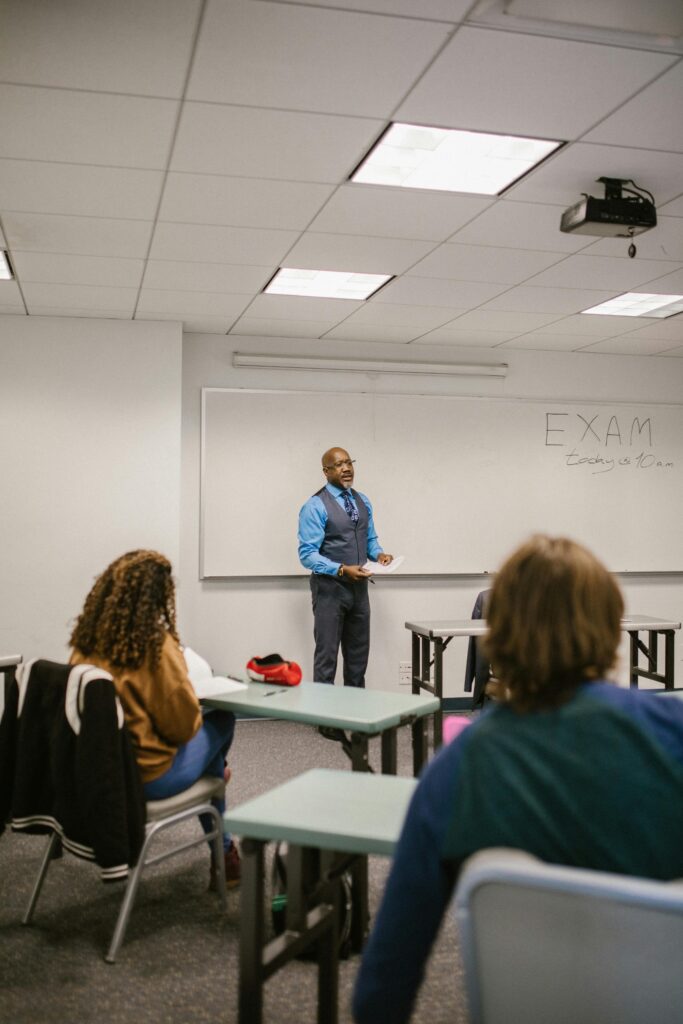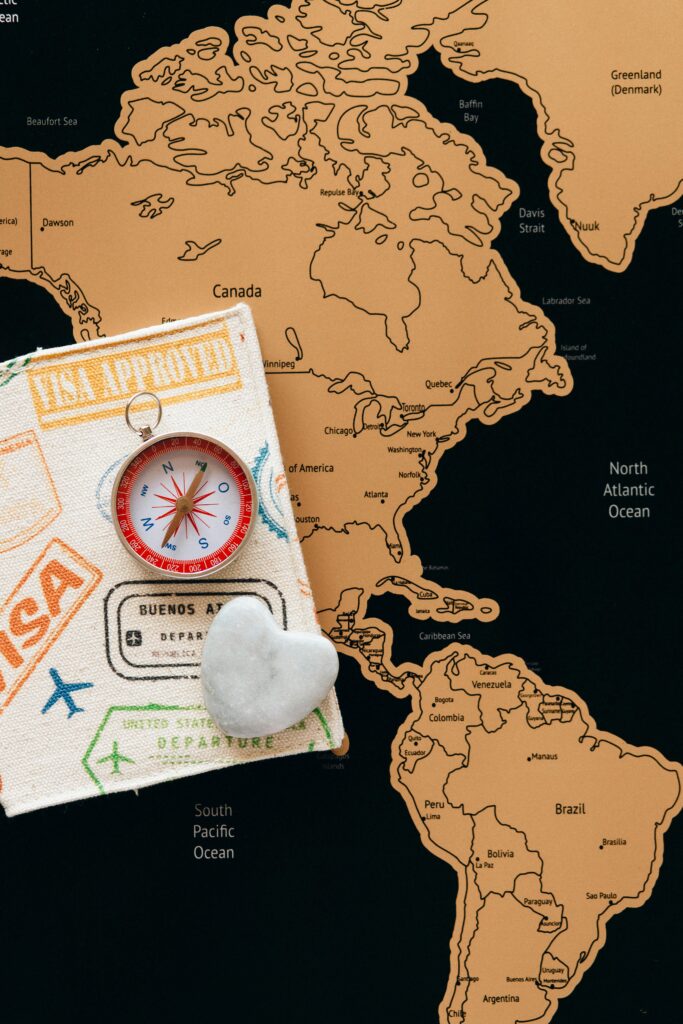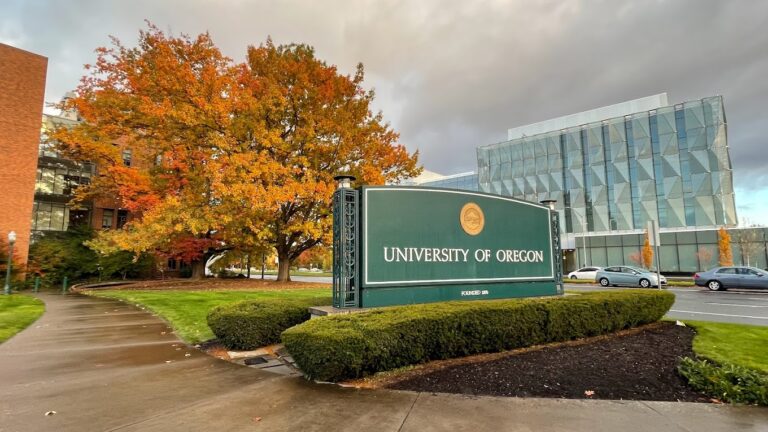How do I start applying for a student visa
Now that I have my offer of admission letter from my chosen school in the USA, how do I start applying for a student visa? Applying for a student visa can seem challenging, yet the process is essential for those dreaming of studying in the United States.
To start the process, an applicant must first apply and get accepted into a U.S. school that issues one of the required documents, either Form I-20 or DS-2019. This initial step is crucial because it confirms the educational institution’s recognition of the student’s enrollment, which is necessary for the visa application.
Once acceptance is secured, the student must pay the I-901 SEVIS fee, a mandatory payment for anyone looking to study in the U.S. After paying this fee, scheduling an appointment at a U.S. Embassy or Consulate for a visa interview becomes the next step. The interview will include questions about the student’s chosen course and plans.
Understanding the differences between visa types is also important. There are three main visas: the F-1 for academic studies, the J-1 for exchange programs, and the M-1 for vocational studies. Choosing the right visa will depend on the student’s specific educational goals and program requirements.
Understanding Student Visas

Student visas are essential for studying abroad. They not only grant entry into a country for educational purposes but also dictate how long a student can stay and under what conditions. The most common types of student visas to the U.S. are F-1, J-1, and M-1 visas.
Definition and Types of Student Visas
Student visas are official documents issued by a country allowing individuals to study within its borders. In the U.S., there are three primary types: F-1, J-1, and M-1.
- F-1 Visa: For academic students attending a U.S. college or university. It also applies to high school students and language training programs.
- J-1 Visa: Used by exchange visitors, including students, scholars, and professionals participating in study-based exchange programs.
- M-1 Visa: For students in vocational or non-academic programs.
Each visa has specific requirements and benefits. For example, F-1 students can work on-campus with restrictions, while J-1 visa holders may participate in travel programs during their studies.
Eligibility Criteria
To qualify for a student visa, certain criteria must be met. Applicants need a valid acceptance letter from a certified school, proving enrollment in an eligible educational program. They must also demonstrate financial stability to cover tuition and living expenses.
Applicants must prove sufficient ties to their home country, ensuring their intention to return upon completion of studies. A valid passport is required, and specific forms like the I-20 for F-1 and M-1 visas or the DS-2019 for J-1 visas must be presented.
Understanding these eligibility criteria is crucial for a successful student visa application.
Preparing for the Application
Applying for a student visa involves several important steps. Gathering essential documents, proving financial stability, ensuring language proficiency, and checking passport validity are all vital components of the application process. Each requires careful attention to detail to ensure a smooth experience.
Gathering Required Documentation
To begin the student visa application process, they must gather a series of critical documents. This includes receiving an acceptance letter from a recognized U.S. educational institution. The institution will issue a Form I-20 for F-1 or M-1 visas. This form is essential, as it serves as proof of student status and the intended course of study.
In addition to the Form I-20, an applicant must complete Form DS-160, the online nonimmigrant visa application form. This form collects personal and educational information. A passport-sized photograph that meets specific U.S. visa requirements is also needed. These documents ensure that the application meets the requirements as set by the U.S. government.
Securing Financial Proof
A key component of the student visa application is demonstrating financial capability. Applicants must prove they have the necessary funds to cover tuition fees and living expenses while in the U.S. Financial documents may include bank statements, scholarship letters, or sponsorship affidavits.
It is crucial to present recent bank statements, usually covering at least three months. These statements should reflect sufficient funds to avoid any doubts about financial readiness. If a family member or sponsor provides support, their financial documents should include a confirmation letter detailing their commitment to covering the applicant’s expenses.
Language Proficiency Tests
For most U.S. schools, demonstrating English language proficiency is a requirement for international students. Commonly accepted tests include the TOEFL or IELTS. These tests measure the applicant’s ability to understand and communicate effectively in English.
Selecting the right test depends on the requirements set by the prospective school. Students should register and prepare for the test well in advance to ensure the scores are ready when applying. Achieving high scores can also improve chances of acceptance, as they reflect readiness to engage in an English-speaking academic environment.
Passport Validity Concerns
Passport validity is another important consideration when applying for a student visa. Applicants must ensure their passport is valid for at least six months beyond their intended stay in the U.S.
Having a passport near expiration can lead to application delays or denials. It is advisable to renew the passport well in advance if it does not meet this requirement. Applicants should also consider applying for a passport book, as many countries require them for visa approval, rather than a passport card.
Application Process

The application process for a student visa involves several steps. It includes selecting the right type of visa, completing necessary forms, paying required fees, and attending an interview.
Selecting the Right Visa
Students must first decide which type of visa they need. The most common ones are the F-1 visa for academic studies and the M-1 visa for vocational programs. Another less common option is the J-1 visa for exchange programs. The choice depends on the type of course and the institution’s certification with the Student and Exchange Visitor Program (SEVP). To avoid errors, students should check if their school is SEVP-certified. It’s essential to match the visa type with their intended study program.
Completing the Application Form
After selecting the right visa, students need to fill out Form DS-160, the Online Nonimmigrant Visa Application form. This form collects personal, travel, and study information. Applicants must ensure all details are correct and match the information on their passport and admission documents. Completing the form requires an internet connection and a digital photo that meets U.S. visa photo requirements. Once submitted, a confirmation page is generated, which must be printed and brought to the interview. It’s a crucial step in the student visa process.
Paying the Visa Fee
A crucial part of the process is paying the visa application fee, also known as the Machine Readable Visa (MRV) fee. This fee is non-refundable and varies by country. It can usually be paid online via a single payment platform that accepts various payment methods. Additionally, most applicants are required to pay the SEVIS fee associated with maintaining the Student and Exchange Visitor Information System. Proof of payment of both fees must be presented during the visa interview. Payment details and processes are specified on the respective U.S. Embassy websites.
Scheduling an Interview
Scheduling a visa interview is a critical step. The interview must be scheduled at the U.S. Embassy or Consulate in the student’s home country. It’s recommended to book an appointment early, as interview slots can fill up quickly, especially during peak times. When scheduling the interview, students need their passport number, MRV fee receipt, and DS-160 confirmation page. During the interview, students must demonstrate their intent to study in the U.S., provide the required documentation, and show how they will fund their education. Applicants can review guidelines and requirements on the U.S. Department of State website.
After Application Submission
After submitting a student visa application, applicants should be aware of processing times, steps to handle delays, and how to respond if additional information is required. These aspects can influence the overall timeline and outcome.
Visa Processing Timeframes
Visa processing times can vary based on several factors. Applicants should check the US Department of State for specific details. Typically, processing can take a few weeks to a couple of months. Factors such as time of year, consulate workload, and proficiency of submitted documents can influence this timeframe.
Applicants are advised to apply early to avoid delays. It is essential to stay informed about current processing times by visiting official websites. Understanding the expected wait period can help applicants plan better for travel and other arrangements.
Steps to Take if Your Visa is Delayed
If a visa application is delayed beyond the expected timeframe, applicants should first contact the consulate or embassy where the application was submitted. It’s important to do this through the appropriate channels, which can often be found on the international student office website.
Applicants may request an update on their application’s status. It’s helpful to have your case number and other relevant information ready. Being patient and following up periodically is crucial. In some cases, seeking assistance from the school’s international student office can provide additional support and recommendations for further action.
Responding to Additional Requests
Sometimes, the consulate or embassy may request additional documents or information. It’s essential to respond promptly and accurately to such requests. Typical requests might include financial documentation or proof of return plans.
Applicants should carefully review any communication received from the immigration office. If unclear about what’s required, it’s advisable to contact the visa office for clarification. Providing precise and organized documentation can help expedite the process. Keeping copies of all correspondence and documents sent is also important for personal records and future reference.
Visa Approval and Post-Approval Actions
Once a student visa has been approved, applicants should focus on completing necessary post-approval actions. These steps include understanding how to manage the approval, fulfilling obligations, and preparing for travel.
Handling Visa Approval
Upon receiving visa approval, it’s essential for students to review all details on their visa stamp. Check that the personal information, visa type, and expiration date are correct. Mistakes can impact travel plans and require corrections.
Next, students should secure their Form I-20 or DS-2019, critical documents needed for entry into the United States. Maintaining these documents safely is a priority as they will be required at multiple stages during travel and stay.
Visa holders may also need to inform their host institution of their visa status. Institutions often require notification to prepare necessary resources and support.
Post-Approval Obligations
Once the visa is approved, students need to pay the SEVIS fee if it was not paid previously. This fee supports the Student and Exchange Visitor Information System. Payment confirmation is often required during entry to the U.S.
Additionally, students should arrange housing and inform their school of their plans. Schools often provide guides to help with this process, including recommendations for nearby housing or on-campus options.
Students must also purchase health insurance. Many schools have specific requirements for insurance policies. It’s crucial to compare options and select one that meets all institutional guidelines.
Preparing for Departure
Travel preparations should begin well in advance. Begin by booking flights to the U.S. well before the program start date. Students should plan to arrive a few days early, allowing time to adjust to the new environment.
Packing should focus on essentials. Important documents like the passport, visa, and Form I-20 or DS-2019 should be in an easily accessible place. Consider the weather and cultural norms at the destination.
Finally, students should familiarize themselves with U.S. Customs regulations to ensure smooth entry. Knowing what items are allowed or prohibited can save time and prevent hassles at the border.
Maintaining Visa Status While Studying Abroad

International students need to follow specific guidelines to keep their visa status active while studying abroad. It’s essential to comply with the rules set by immigration authorities to avoid complications.
Abiding by Visa Conditions
Students must attend classes full-time and maintain the enrollment status required by their visa terms. For F-1 visas, this usually means registering for at least 12 credit hours per semester.
Adhering to these requirements is crucial. If a student intends to take fewer classes, they should speak with their designated school official (DSO) to avoid falling out of status. Additionally, students should keep a valid passport, not engage in unauthorized work, and report any changes in personal information to their school.
Renewal and Extension Procedures
Visa holders should be aware of their visa expiration date. If the duration of their study exceeds the visa term, they must apply for an extension in advance. This process requires coordination with their school and U.S. immigration services.
To extend an F-1 visa, students should submit Form I-539, along with necessary fees and documentation. J-1 visa holders need to work with their program sponsor to file their extension. Students should ensure all paperwork is complete and submitted timely to avoid gaps in their visa status and stay compliant.
Common Challenges and Solutions
Applying for a student visa can present several challenges, but knowing how to navigate them can make the process smoother. Challenges might include dealing with visa denials, managing finances, and meeting academic performance expectations.
Addressing Visa Denials
Visa denials can be disheartening, but understanding the reasons can help applicants reapply successfully. Common reasons include insufficient documentation and lack of strong ties to the home country. Applicants should review the denial letter carefully to address specific issues. Preparing a strong application involves gathering all required documents and proving financial stability.
Reapplying Tips:
- Correct any errors in the initial application.
- Provide detailed explanations for previously missing documents.
- Ensure all information is accurate and up-to-date.
Navigating Financial Hurdles
Financial constraints are a major hurdle for many international students. They need to demonstrate sufficient funds to cover tuition and living expenses. Creating a detailed financial plan can help applicants meet these requirements. Potential funding sources include scholarships, sponsorships, and personal savings.
Budget Planning:
- Identify Costs: Tuition, housing, and living expenses.
- Funding Sources: Scholarships, grants, and part-time work.
- Documentation: Bank statements or letters from sponsors.
Academic Performance Expectations
Applicants must meet certain academic requirements which differ among schools. Some institutions require proficiency in English or high grades in previous studies. Understanding these expectations is crucial.
Essential Steps:
- Language Proficiency: Applicants may need to provide test scores like TOEFL or IELTS.
- Academic Records: Maintain high grades in relevant subjects.
- Preparation: If needed, take additional courses or tutoring to meet academic criteria.
Frequently Asked Questions
Applying for a student visa involves several steps, including gathering documents, paying fees, and attending interviews. Understanding the process can make it easier to navigate and secure a visa for studying in the United States.
What documents are needed to apply for an F1 student visa?
Applicants need a valid passport, Form I-20 from the U.S. school they plan to attend, and proof of financial support. Other required documents include recent passport-sized photos and Form DS-160, the online visa application form.
Can I apply for a student visa online, and if so, how?
Yes, the application process begins online by completing Form DS-160, the Online Nonimmigrant Visa Application. This form is available on the U.S. Department of State website. After filling out the form, applicants will be guided on how to schedule an interview at the U.S. Embassy or Consulate.
What are the steps involved in obtaining a student visa for studying abroad?
First, apply and be accepted by a U.S. school, which will provide Form I-20. Pay the I-901 SEVIS fee, complete the DS-160 form, and schedule a visa interview. Attend the interview with the required documents and wait for visa processing.
What are the financial requirements for a student visa application?
Applicants must demonstrate they have sufficient funds to cover tuition and living expenses while studying. This can be shown through bank statements, financial affidavits, or proof of scholarships. It’s important to verify the specifics with the particular institution or embassy.
How long does it take for a student visa to be processed?
Visa processing times can vary, but applicants should start the process as early as possible. Generally, it can take a few weeks to several months. After the visa interview, processing time will depend on the individual case and any further administrative processing, if required.
What is Form I-20, and why is it important for an F1 visa application?
Form I-20 is issued by the U.S. school confirming admission and enrollment. This form is essential because it allows students to apply for the F1 visa and pay the I-901 SEVIS fee. It contains vital information about the student’s study program and financial details.
Conclusion

Applying for a student visa is a critical step for anyone wishing to study in the United States. It involves several steps, starting with getting accepted to a U.S. school and receiving an acceptance letter.
An applicant needs specific documents for the process, such as a valid passport and proof of financial support. Each required document helps verify the student’s identity and their ability to sustain themselves financially while studying.
Paying the I-901 SEVIS fee is also necessary before attending a visa interview. This fee supports the Student and Exchange Visitor Information System, which manages information for non-immigrant students.
The Form I-20 for F-1 or M-1 students and Form DS-2019 for J-1 students are important paperwork that must be received from the school. These forms allow students to apply for their visa at a U.S. embassy or consulate.
Preparing for the visa interview is another key step. Understanding what to expect can help students communicate confidently and show their intent to study in the U.S. This includes knowing about student visa requirements and processes.
Consider each step carefully and ensure all documents are in order before beginning the application. Being organized can help applicants successfully navigate the student visa process.







